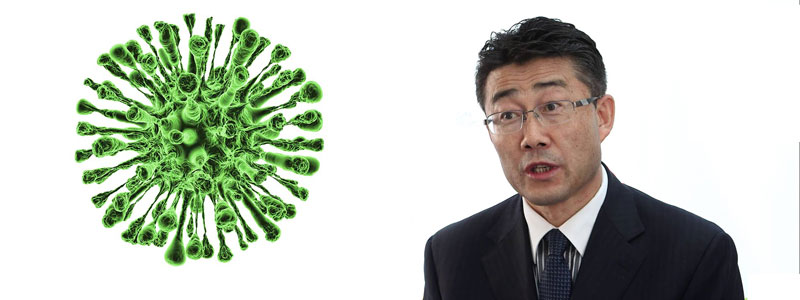 George Fu Gao, head of the Chinese Center for Disease Control and Prevention, was recently interviewed by Science magazine. Dr. Gao was educated at Oxford and Harvard. He rarely speaks publicly. He is one of the few scientists to have access to the actual Chinese data. He is evaluating the protease inhibitor remdesivir in a controlled trial and due to report in April. Should remdesivir show activity against COVID-19, it would be a game changer.
George Fu Gao, head of the Chinese Center for Disease Control and Prevention, was recently interviewed by Science magazine. Dr. Gao was educated at Oxford and Harvard. He rarely speaks publicly. He is one of the few scientists to have access to the actual Chinese data. He is evaluating the protease inhibitor remdesivir in a controlled trial and due to report in April. Should remdesivir show activity against COVID-19, it would be a game changer.
Here are the highlights from the interview, with a comparison with policies from our CDC (I have truncated some text).
“The big mistake in the US and Europe is people aren’t wearing masks. Masks trap virus laden invisible droplets from asymptomatic patients. If one wears a mask, one is unlikely to infect others.” He is describing a cloth or paper mask, not hospital grade equipment. The asymptomatic patient is the true reservoir that fuels the epidemic. Community-wide mask wearing complements social distancing. It also conveys a common purpose. Until there is an antibody test, you don’t know if you have (or had) COVID-19. You wear a mask more to protect others than yourself.
Our CDC recommends only sick or coughing people wear masks.
“China has made aggressive use of thermometers at the entrances to stores, buildings, and public transportation inside China and at all airports.
Our CDC has no policy on public thermometer use. We do not take people’s temperature at borders or airports.
“Social distancing, isolation, quarantine, and contact tracing of the key measures, along with suspending public gatherings, restricting movements. The essential to getting the epidemic down and preventing flare-ups is testing with a rapid turnaround to identify carriers and contacts.”
Our CDC failed to develop testing which would have identified cases, who could then be isolated and quarantined, while their contacts were traced and tested as well. At the present time, our health care system has no resources to even do contact tracing on fatalities.
“We are no longer certain the virus originated in the seafood market in Wuhan. It may have originated elsewhere, and the crowded seafood market amplified its distribution. There is a theoretical Patient Zero, a 53-year-old woman who worked in the market and became symptomatic on November 17. However, she was the only one of the first five patients with exposure to the market. The other four out of five had no exposure to the market.”
The Chinese CDC uses interviews, questionnaires, cellphone location records, video surveillance, and Communist Party block chairman to facilitate contact tracing. When they say the four had no contact, you should believe it. I’ll comment on this in a future blog.
Our CDC has no plan for contact tracing. In 1947, a bus pulled into Penn Station in New York City from Mexico with a man who later died of smallpox. We had a mobilization for smallpox at that time, and we have one now for coronavirus. (We also had a smallpox vaccine.) Contact tracing was a crucial step in aborting what would have been the largest smallpox epidemic in history. Our lack of early testing/tracing for coronavirus is a catastrophe of immense proportions.
Pandemics work their way around the world. The 1918 flu pandemic made it around the world three times in two years. The first trip was an average flu season, the second trip killed 50 million people in four months, and the third trip killed an unknown number of people, because, after the second trip, no one was counting.
Nations need to take temperatures, administer questionnaires, and perform rapid testing (15-minute turnaround test will be released by Abbott Labs March 30) at airports and other ports of entry and descend on hotspots. This will be the early warning system until the development of vaccines or medications. This system can diffuse coronavirus when it comes for that second visit.
It can also slow this epidemic. There is no time to delay.
| The math of social distancing: | 30 Days Later | ||
| Continue normal social contacts | 1 infected person |
= 400 |
infected persons |
| Reduce social contacts 50% | 1 infected person |
= 15 |
infected persons |
| Reduce social contacts 75% | 1 infected person | = 2 | infected persons |
Please social distance. I would ask you to think of it as “physical distancing.” You should try to take every opportunity to engage in safe social engagement, of which the most applicable is video chatting. If you aren’t familiar with these programs, Zoom gets the nod from reviewers.
COVID-19 Live Data
This data is updated hourly, and provided by Johns Hopkins University.

